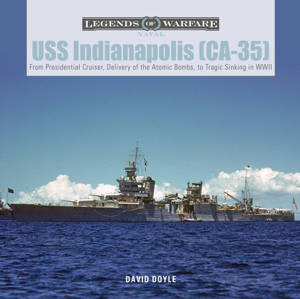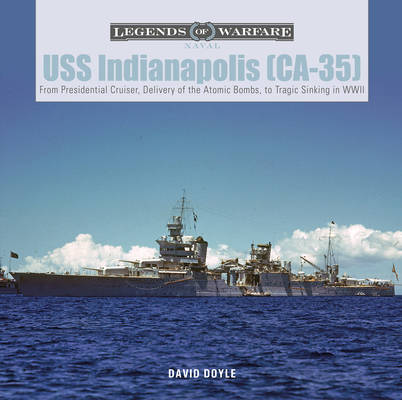
- Afhalen na 1 uur in een winkel met voorraad
- Gratis thuislevering in België vanaf € 30
- Ruim aanbod met 7 miljoen producten
- Afhalen na 1 uur in een winkel met voorraad
- Gratis thuislevering in België vanaf € 30
- Ruim aanbod met 7 miljoen producten
Zoeken
USS Indianapolis (Ca-35)
From Presidential Cruiser, to Delivery of the Atomic Bombs, to Tragic Sinking In WWII
David Doyle
€ 28,45
+ 56 punten
Omschrijving
Despite the limitations of the Washington Naval Treaty, USS Indianapolis was an imposing warship. She was widely used by US dignitaries in the 1930s, including President Franklin D. Roosevelt, who sailed aboard the ship many times. After the outbreak of World War II, she saw service near Alaska before moving into waters nearer the Japanese home islands. There, she was struck by a kamikaze and forced to return to the US for repairs. Upon completion of the repairs, Indianapolis was selected to transport components of the "Little Boy" atomic bomb from mainland US to Tinian in the Marianas Islands. On the return journey, she was torpedoed and sunk by a Japanese submarine, becoming the last large warship lost by the US during World War II. Delay in the mission to recover surviving crew resulted in the largest loss of life aboard a single ship at sea in US Navy history. The sinking of Indianapolis remains surrounded in controversy, and the wreck was not located until 2017.
Specificaties
Betrokkenen
- Auteur(s):
- Uitgeverij:
Inhoud
- Aantal bladzijden:
- 128
- Taal:
- Engels
- Reeks:
- Reeksnummer:
- nr. 21
Eigenschappen
- Productcode (EAN):
- 9780764362620
- Verschijningsdatum:
- 30/11/2021
- Uitvoering:
- Hardcover
- Formaat:
- Genaaid
- Afmetingen:
- 232 mm x 232 mm
- Gewicht:
- 816 g

Alleen bij Standaard Boekhandel
+ 56 punten op je klantenkaart van Standaard Boekhandel
Beoordelingen
We publiceren alleen reviews die voldoen aan de voorwaarden voor reviews. Bekijk onze voorwaarden voor reviews.











